It wasn’t every day that Raphael Sanzio received a commission to commemorate a man who was brutally murdered, but when he did, he did whatever he could to turn it into a masterpiece.
In this article, we’ll take a closer look at a painting entitled “The Deposition,” one of the most remarkable works in the oeuvre of the renowned Renaissance artist.
1. It’s the central part of a large altarpiece
The Deposition by Raphael is the final commission that Raphael received from Perugia the home city of his alleged master Pietro Perugino (1446-1523).
The painting we discuss here wasn’t the only feature of the commission, though, as it was intended to be a large altarpiece.
There was originally a top panel as well which featured in the image of God as he is blessing his deceased son. The lower section featured 3 separate works of figures representing the 3 virtues of religion, Hope, Charity, and Faith.
The main panel also used to have a frame that was decorated with griffins, legendary creatures with the body and legs of a lion, and the head and wings of an eagle.

2. It was painted in honor of a victim of a family feud in Perugia
Today, gangs like the Bloods and the Crips are affecting entire communities in the United States. Back in the late 15th and early 16th centuries, family gangs ruled the streets of major Italian cities.
In Perugia, fistfights were pretty common back then, but sometimes the degree of violence was much higher. This was the case on July 3, 1500, when a couple of disgruntled members of the Baglioni family plotted to murder the rest of the family during the night.
This noble family ruled over Perugia for over a century between 1438 and 1540. Grifonetto Baglioni was the main conspirator who ended up being murdered by the surviving members of the Baglioni family himself, including the head of the family, Gian Paolo Baglioni.
It was the devastated mother of Grifonetto Baglioni, Atalanta Baglioni, who commissioned the work from Raphael a couple of years following her son’s demise.
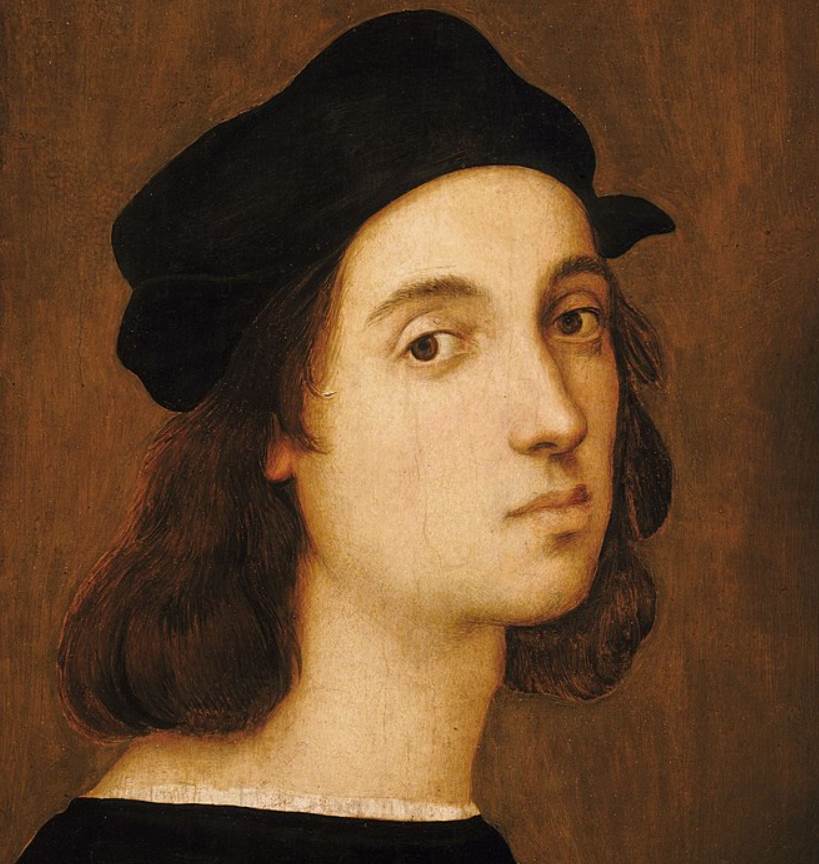
3. The painting features multiple popular themes in Christian art
Even though the painting depicts the Deposition of Christ, it’s actually a narrative painting that portrays the weeping family members of Grifonetto Baglioni.
To convey the message of the painting, Raphael combined multiple popular themes in Christian art:
- The Deposition of Christ – The descent from the cross after Jesus Christ passed away following his crucifixion.
- The Lamentation of Christ – The scene in which mourning friends and family members of Jesus Christ stand over his body following his death.
- The Entombment of Christ – The burial of the body of Jesus Christ following his crucifixion.
Perhaps the most striking element of the painting is Mary who has fainted. She represents Atalanta Baglioni and is supported by the “Three Marys.” This element of the painting is referred to as “The Swooning of Mary.”

4. Raphael didn’t mess around regarding the preparatory studies
Just like most of his other works, Raphael was very particular when it came to the preparatory studies he conducted for this work.
This is emphasized by the fact that it took about 2 years before the commission was actually completed in 1507.
His studies also clearly show the influence he had from other famous Renaissance artists such as the works of Michelangelo and Leonardo da Vinci, as well as those of his master Pietro Perugino.
It also marks the development of Raphael towards his maturity, influenced by masters from both Florence and Perugia, just before he left for Rome in 1508. This notion makes this painting an extra remarkable work in his oeuvre.
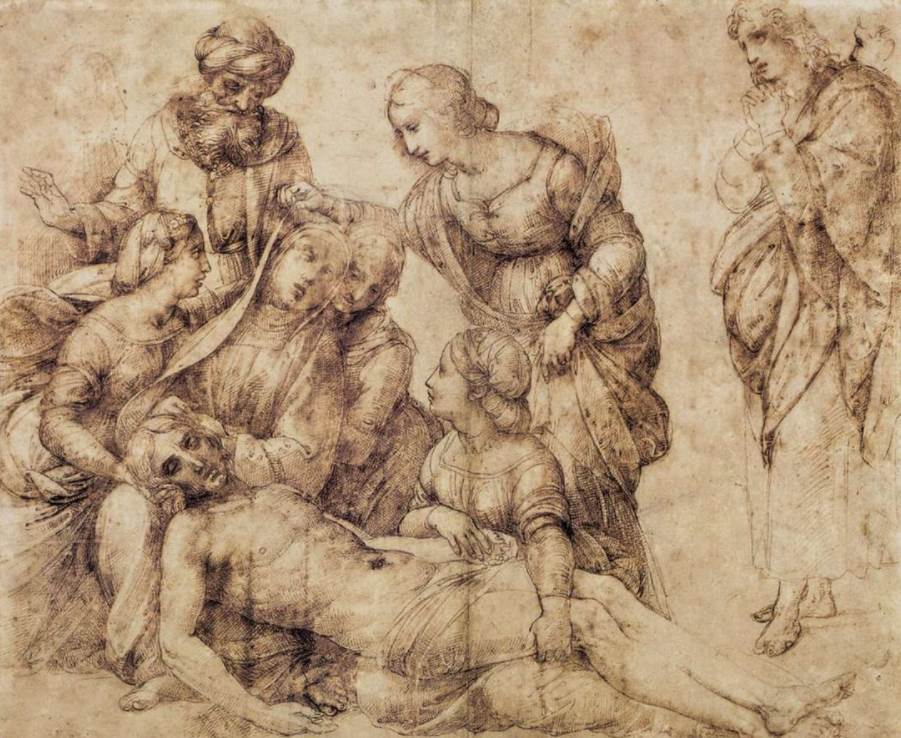
5. It was confiscated and brought to Rome in the early 17th century
Upon completion, the painting was placed in the chapel of the Baglioni family inside the church of San Francesco al Prato in Perugia. It was located here for about a century as well.
In the year 1608, the painting was confiscated by the greedy nephew of Pope Paul V, his secretary Cardinal Scipione Borghese. His gang brought the painting back to Rome to decorate his lavish Villa Borghese.
This also means that the painting is still located in Rome today because the Villa Borghese is now a popular museum of fine art called the “Galleria Borghese.”
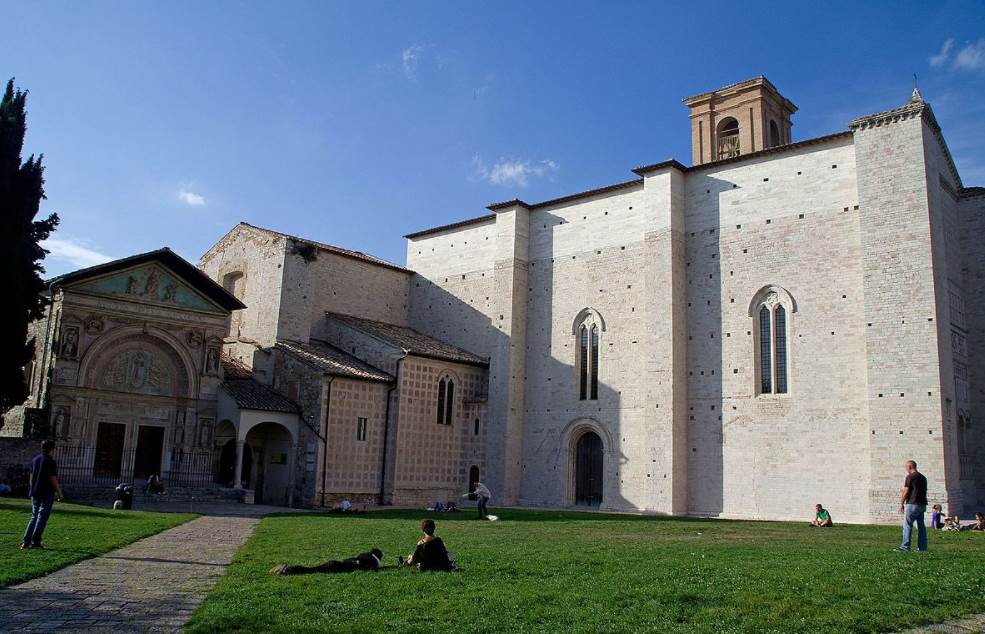
More interesting facts about The Deposition by Raphael
6. Because the painting was commissioned to decorate an altar in a chapel of the Church of San Francesco al Prato in Perugia, it’s quite big.
The oil on wood painting was completed in 1507 and has dimensions of 184 × 176 centimeters (72 × 69 inches).
7. Even though the elements are present, neither the deposition nor the entombment actually takes place in the painting. This can be determined through the background which depicts Calvary Hill, the location where the crucifixion actually took place according to the Bible.
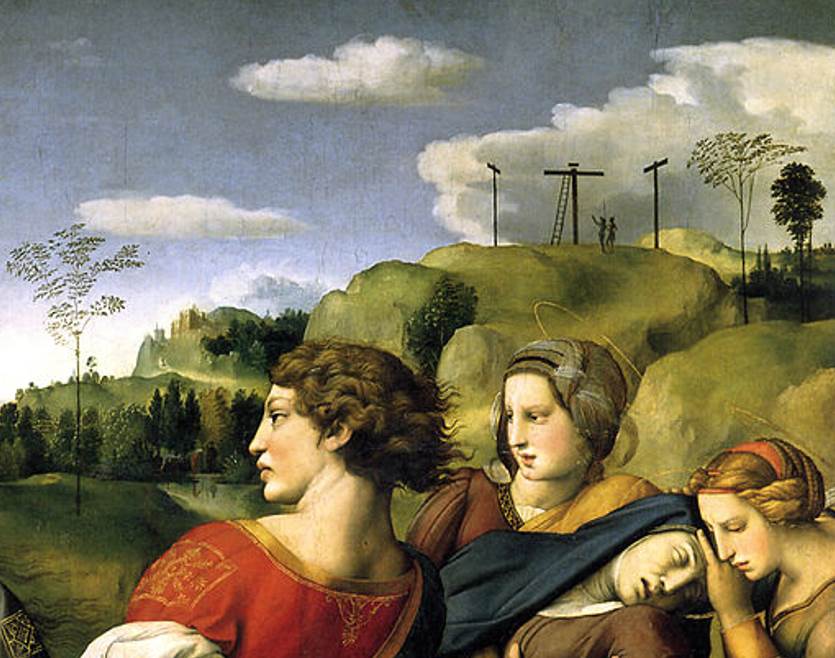
On the left side of the painting, the entrance of the cave in which the entombment takes place was integrated by Raphael as a reference to this story.
8. The position of one of the three Marys supporting the Virgin mary is somewhat awkward. Her drapery is also excessively cut, a technique in painting referred to as “figura serpentinata” which makes the figure more dynamic.
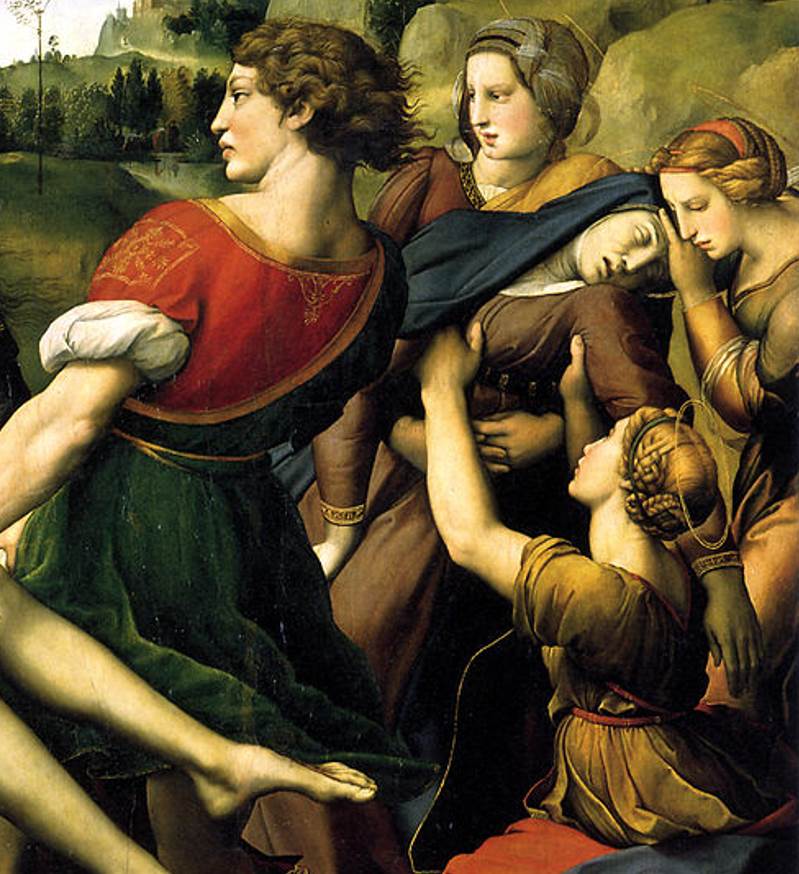
This is the main reason why this part of the painting is believed to have been influenced by one of Michelangelo’s masterpieces called “Doni Tondo.” This work was completed only a few years earlier and which Raphael certainly saw during his time in Florence.
9. The three predella panels that decorated the lower part of the complete altarpiece were painted in “grisaille.” This is a painting technique in which only shades of grey are used.
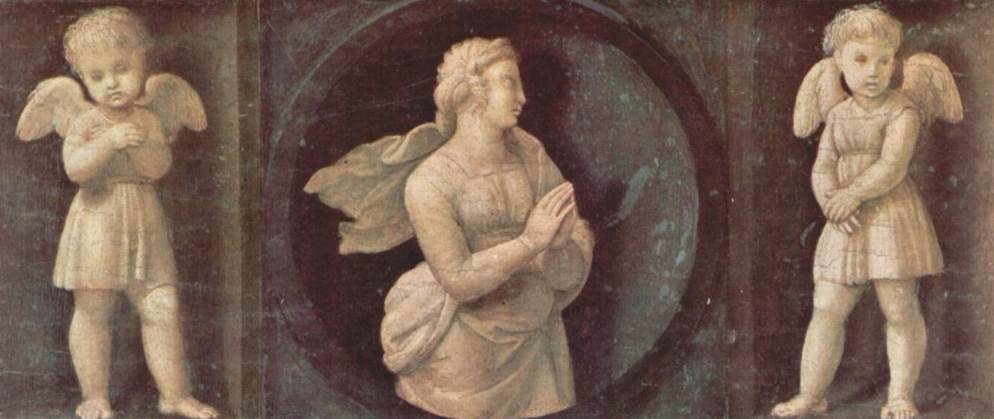
Each panel was accompanied by two “putti” (angels), one on each side. The panel representing “Faith” is part of the collection of the Vatican Museum.
10. Even though the painting was brought to Rome from its original location Perugia in 1608, it didn’t always stay there.
It ended up being confiscated yet again by the French in 1797 and was on public display at the “Musée Napoleon” (the name of the Louvre in this period) until it was returned to the Galleria Borghese in 1815.

